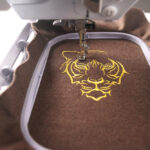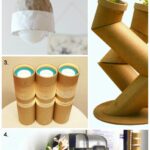I. Introduction to 3D Printing in Classic Car Modifications
II. Benefits of Using 3D Printed Concept Models for Planning
III. Steps to Create and Utilize 3D Printed Models for Classic Cars
Introduction to 3D Printing in Classic Car Modifications
Hey there, fellow car enthusiasts! Have you ever found yourself dreaming of revamping a classic car? Perhaps you’ve got your sights set on a vintage Mustang or a timeless Corvette, and you’re itching to make it your own. While the thrill of classic car restoration is undeniable, it often comes with its own set of challenges, especially when it comes to finding parts or envisioning modifications. This is where 3D printing bursts onto the scene, like a superhero in our automotive dreams!
3D printing, or additive manufacturing, has revolutionized numerous industries, and the world of classic car modifications is no exception. Imagine being able to design and create custom parts tailored specifically to your car’s needs—sounds exciting, right? This technology allows you to bring your visions to life in a way that was once only possible in sci-fi movies.
What’s the Buzz About 3D Printing?
So, what exactly is 3D printing? It’s a process where physical objects are created from a digital file, layer by layer. Think of it as baking a cake: you start with a base (the digital model), and then you add layers of icing (the material) until you have a delicious, fully-formed cake (the final product). With 3D printing, you can produce anything from engine covers to custom dashboard components, all with precision and creativity.
Why Classic Car Lovers Should Care
Now, why should you, as a classic car lover, be excited about this technology? Here are a few compelling reasons:
- Customization: 3D printing gives you the freedom to create bespoke parts tailored to your car and style.
- Availability: Many classic car parts are no longer produced, making them hard to find. 3D printing can replicate parts that have become scarce.
- Cost-Effective: In some cases, creating a part with a 3D printer can be more affordable than sourcing rare components.
- Speed: Need a part in a hurry? 3D printing can significantly reduce the time it takes to produce custom parts.
What’s Next?
As you can see, the intersection of 3D printing and classic car modifications is bursting with potential! Whether you’re restoring an old beauty or creating your dream ride from the ground up, incorporating 3D printing into your process can open doors to endless possibilities. It’s like having a magical toolbox at your disposal.
So, buckle up! In the upcoming sections, we’ll dive deeper into the benefits and practical steps to effectively use 3D printing in your classic car projects. Ready to hit the road of creativity? Let’s go!
Benefits of Using 3D Printed Concept Models for Planning
When it comes to modifying classic cars, the process can be both thrilling and daunting. One of the most exciting advancements in automotive customization is the use of 3D printing. This technology isn’t just a gimmick; it carries substantial benefits that can revolutionize the way you approach your classic car project. Let’s dive into some of these advantages!
1. Visualize Your Ideas
Have you ever tried to explain a modification to a friend or a mechanic, only to have them look at you like you’re speaking a different language? With 3D printed models, you can take your ideas from abstract concepts to tangible representations. You can visualize the end result before you even pick up a tool.
2. Precision and Customization
One of the most significant perks of 3D printing is the level of precision it offers. Traditional fabrication techniques can sometimes lead to guesswork, but 3D printing allows you to create pieces that fit perfectly within your vehicle. Whether it’s a new dashboard, a custom grill, or an intricate interior part, you can ensure that everything is tailor-made for your classic ride.
3. Cost-Effective Prototyping
Let’s face it: modifying a classic car can get expensive quickly. One of the best ways to save money is to prototype your designs using 3D printing before committing to more costly materials. You can test out different designs, make adjustments, and even try out various colors or finishes—all without breaking the bank!
4. Faster Iteration
In the world of classic car mods, time is often of the essence. Whether you’re racing against the clock for a show or just eager to hit the road, 3D printing allows for faster iterations. You can quickly print several versions of a part, learn from each one, and refine your design on the fly. This speed helps you keep the momentum going and avoids the frustration of lengthy wait times.
5. Enhanced Collaboration
If you’re working with other enthusiasts, builders, or designers, 3D printing can serve as a fantastic collaboration tool. You can easily share your 3D models digitally, allowing others to view, comment, and even suggest modifications. This collaborative approach can lead to more innovative and functional designs.
6. Eco-Friendly Options
For those who are environmentally conscious, 3D printing can be a greener alternative to traditional manufacturing methods. Many 3D printers use materials that are recyclable, and the process typically generates less waste than conventional methods. So while you’re breathing new life into a classic car, you can also feel good about your impact on the planet!
7. Unique Parts for Rare Models
Finding replacement parts for classic cars can be a challenge, especially for rare models. 3D printing opens up a world of possibilities, allowing you to create even the most obscure components. This means you can restore your classic car to its former glory, or even add a personal touch that no one else has!
In conclusion, the benefits of integrating 3D printing into classic car modifications are plentiful. From visualization to customization, cost savings, and quicker turnaround times, this technology offers a fresh and exciting way to reimagine your beloved vehicle. So why not give it a shot and see where your creativity can take you?
Steps to Create and Utilize 3D Printed Models for Classic Cars
So, you’re ready to dive into the world of 3D printing for your classic car modifications? Awesome! This journey can be incredibly fulfilling, allowing you to create custom parts that breathe new life into your beloved vehicle. Let’s walk through the steps to create and utilize 3D printed models effectively.
1. Start with a Solid Design
The first step in this exciting adventure is to create a design for the part you want to print. You can use either CAD (Computer-Aided Design) software or 3D modeling tools. If you’re new to this, consider user-friendly programs like:
- Tinkercad – great for beginners!
- Fusion 360 – more advanced, but powerful!
When designing, make sure to take precise measurements of the existing components in your classic car. This will ensure your printed parts fit perfectly. Remember, you can always look for open-source designs online that can be modified to suit your needs!
2. Choose the Right 3D Printing Material
Next up, you’ll want to select the right material for your print. Different materials offer various strengths, flexibilities, and finishes. Here are a few popular options:
- PLA (Polylactic Acid) – easy to print but not very heat-resistant.
- ABS (Acrylonitrile Butadiene Styrene) – stronger and heat resistant, great for functional parts.
- PETG (Polyethylene Terephthalate Glycol-Modified) – combines ease of printing with durability.
Think about the environment where the part will be used. If it’s going to be exposed to high temperatures or mechanical stress, ABS or PETG might be your best bets!
3. Print Your Model
Once you’ve nailed down your design and material, it’s time to hit that print button! If you have your own 3D printer, fantastic! But if not, many services (like Shapeways or Sculpteo) can print your model for you. Just upload your design and choose your material!
A few tips for a successful print:
- Check the layer height settings – finer layers will yield better details.
- Ensure your printer bed is leveled to avoid print failures.
4. Post-Processing
After printing, you might need to do some post-processing. This can involve:
- Sanding rough edges
- Painting for aesthetics
- Sealing to protect from moisture
Post-processing not only improves the look of your part but can also enhance its durability.
5. Test Fit and Install
Now comes the best part—fitting it to your classic car! Do a dry fit first to check how it aligns with existing components. Make any adjustments if necessary, and then move forward with the installation.
Don’t forget to document the process! Take photos and notes so you can share your experience with fellow classic car enthusiasts.
3D printing can really transform how you approach modifications on your classic car. With a little creativity, patience, and persistence, you can craft parts that are not only functional but also uniquely yours. Happy printing!





Comments